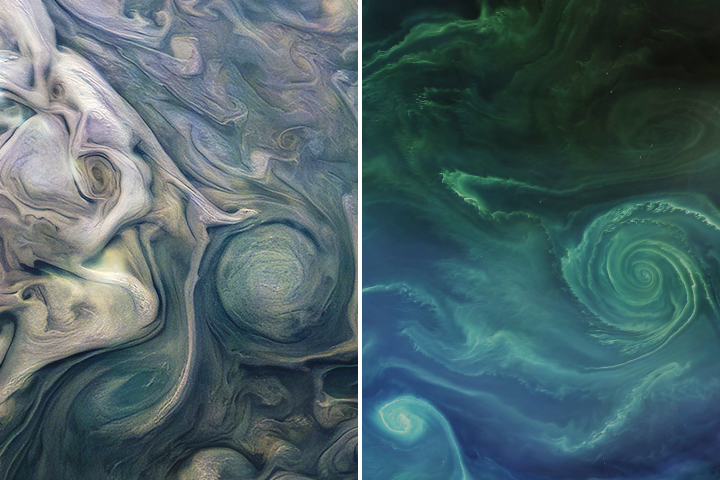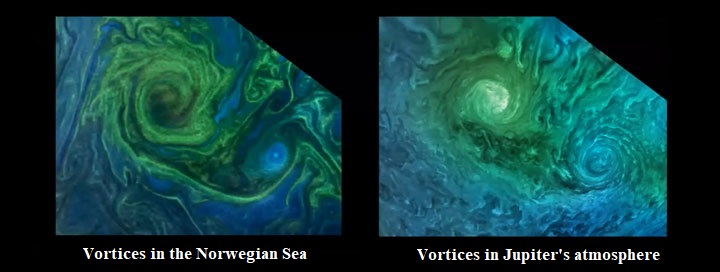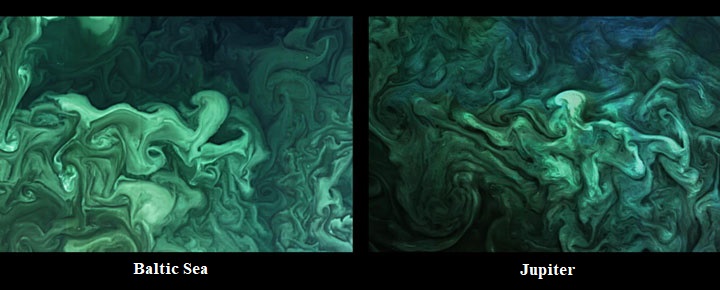Compared to Earth, Jupiter is 11 times larger, 5 times farther from the Sun, 4 times colder and rotates 2.5 times faster. The planets also differ in their composition: Jupiter is a gas giant without a solid surface, and the Earth is a rocky body. Judging by the numbers and composition, the gas giant has little in common with our planet. But if you look at the photos below, you can see some similarities between Jupiter’s clouds and the vortices in the earth’s oceans. Sometimes these pictures are difficult to distinguish.

Comparison of Earth’s oceans and Jupiter’s clouds
The image of Jupiter (left) shows ammonia-rich clouds in the outer layers of its gas envelope. Vortices are caused by the rapid rotation of the planet and high temperatures in the deeper layers of the atmosphere. The image of the Earth (on the right) shows a green bloom of phytoplankton outlining the edges of the vortex in the Baltic Sea. Turbulent processes in the oceans are important for the movement of heat, oxygen and nutrients around the planet.


Scientists have noticed this striking similarity. Lia Siegelman, a physical oceanographer at the Scripps Institution of Oceanography, became interested in the data from the Juno mission (NASA). The images of Jupiter captured by the spacecraft reminded her of the turbulent oceans she had studied on Earth. She presented her examples at a meeting of the American Geophysical Union.
Hydrodynamics
Notice how the swirls and vortices in the Norwegian and Baltic Seas resemble vortices in the Jovian atmosphere. Siegelman noted that, although the scales vary greatly (vortices on Jupiter are about 10 times larger than in the Baltic Sea), these structures are generated by the same kind of hydrodynamics. By studying such natural patterns, scientists will learn more about atmospheric processes on Jupiter. Someday such comparisons will even be able to tell us something new about our home planet.
The Juno spacecraft is currently operating in orbit around Jupiter. It has been collecting data on the gas giant since July 2016. In July 2021, the spacecraft changed its orbit for the purpose of studying Galilean moons. In February 2022, Juno photographed a dark crater on Ganymede.
According to the Earth Observatory.
Follow us on Twitter to get the most interesting space news in time
https://twitter.com/ust_magazine

